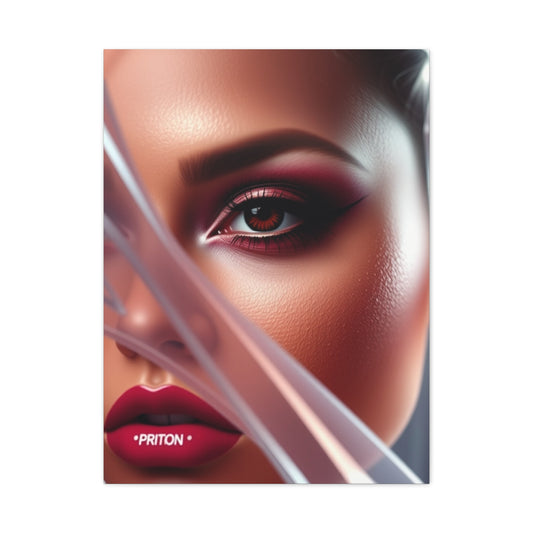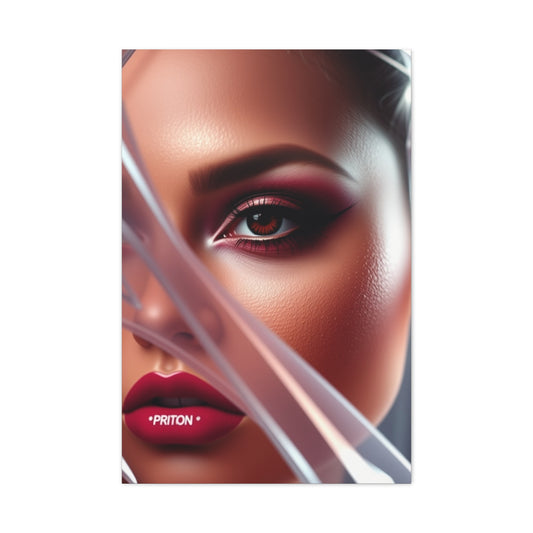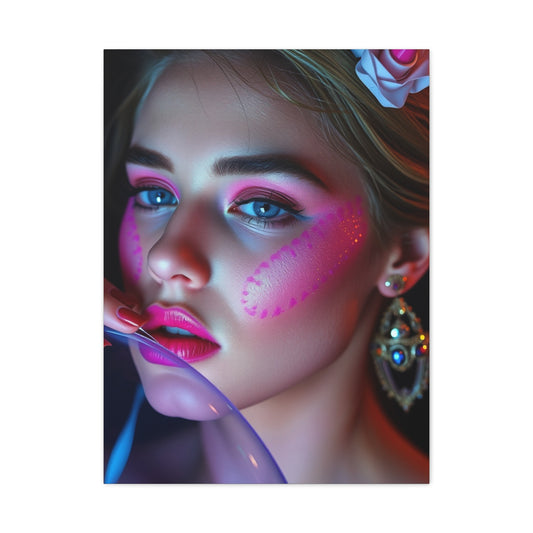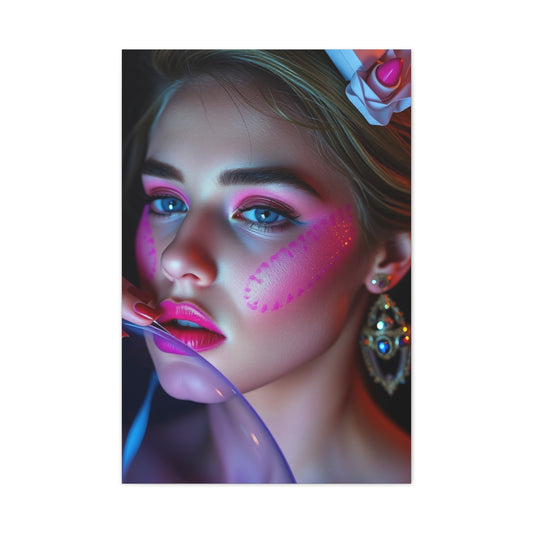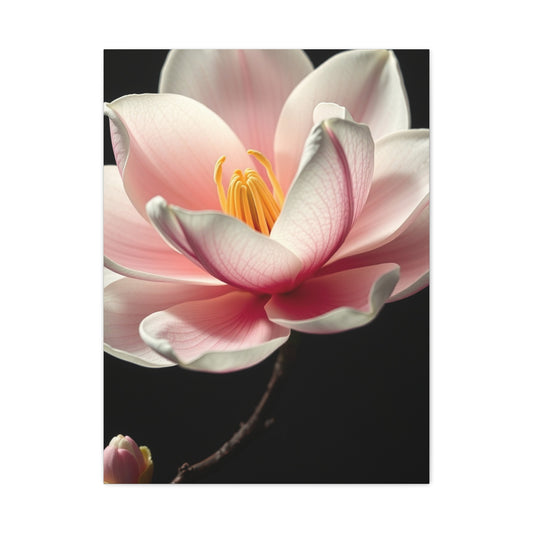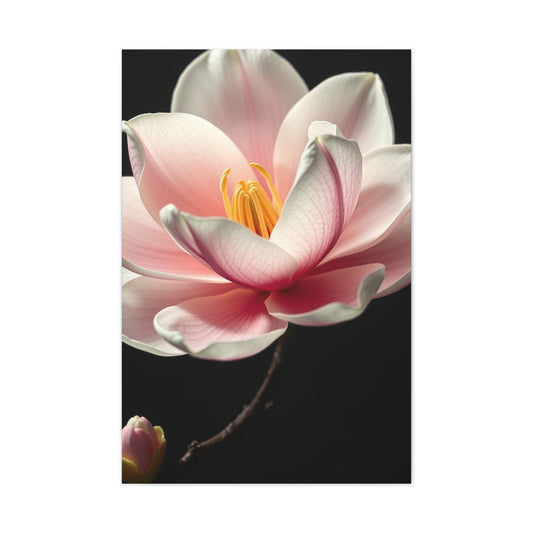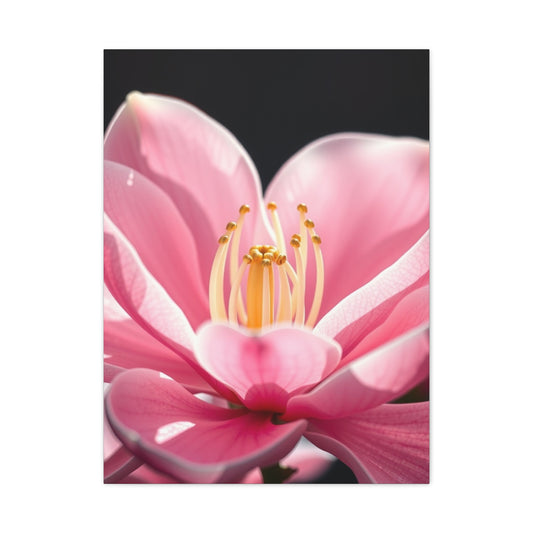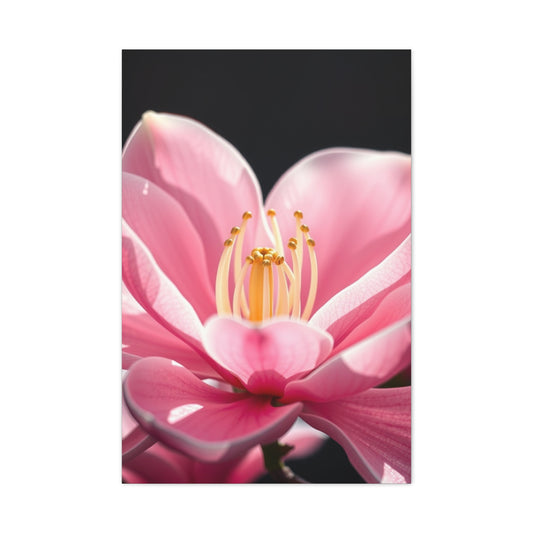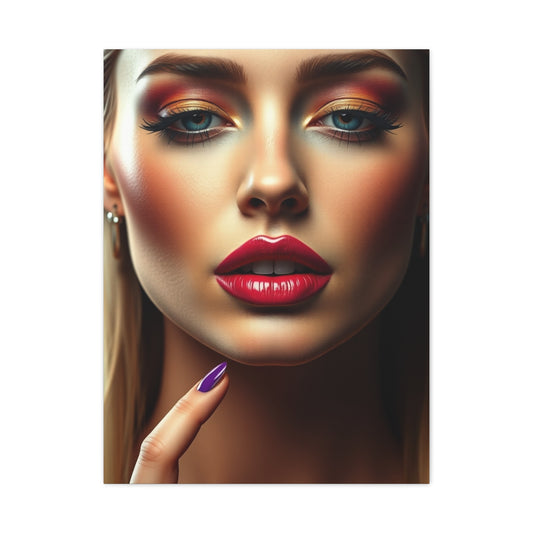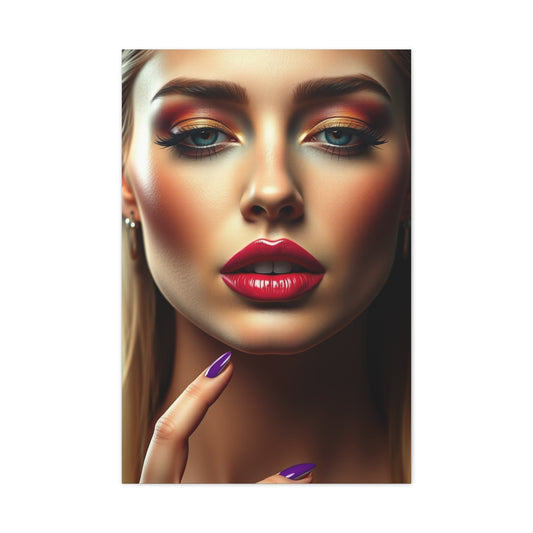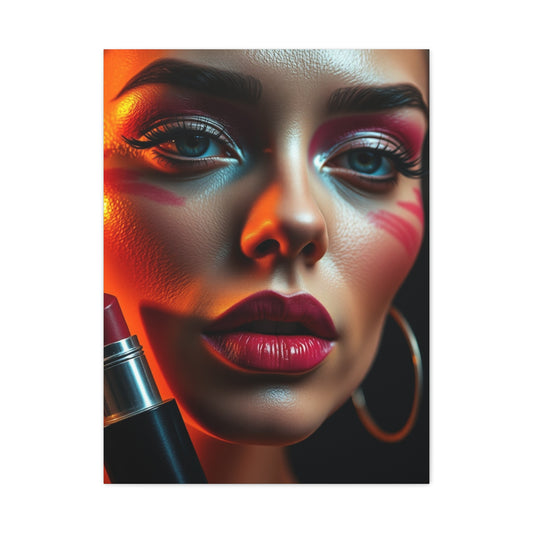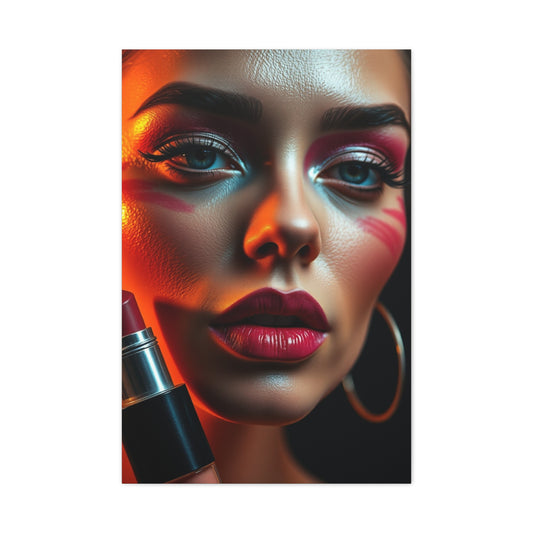The Essentials Of Choosing Bathroom Wall Art
When we think of decorating our homes, the bathroom often comes last on the list. It is a space that people usually associate with function rather than style. Yet modern living has gradually changed how we perceive bathrooms. They are no longer just rooms for necessity but also sanctuaries for relaxation, self-care, and even moments of solitude. A warm bath, a refreshing shower, or even a quick grooming routine can feel dramatically different in a thoughtfully designed bathroom. That is where wall art steps in as an essential element of bathroom décor. Choosing the right bathroom wall art is not just about hanging a pretty frame or sticking a print on the wall. It is about creating an atmosphere, setting a mood, and personalizing a space that too often gets overlooked. In this section, we dive deep into why bathroom wall art matters, the factors that guide the choices, and how to strike the perfect balance between beauty, durability, and functionality.
The first question most homeowners ask themselves is whether it is even safe to hang art in the bathroom. Bathrooms are naturally humid spaces, exposed to moisture, heat, and sometimes poor ventilation. These conditions can damage delicate materials like paper, canvas, or untreated wood. However, this does not mean bathrooms must remain bare. The key lies in selecting artwork and framing techniques that can withstand humidity. For example, professionally framed prints with sealed backs or laminated surfaces provide resilience. Metal art, ceramic pieces, or tempered glass prints are other excellent options since they do not warp, attract mildew, or get damaged by water splashes. The essential thing to remember is that bathroom wall art should be chosen with longevity in mind. Nobody wants to see a beautiful print curl up at the edges after only a few months. Durability is a fundamental part of making the right choice.
|
Related Catagories: |
Beyond practicality, bathroom wall art is about expression. The bathroom might be a private space, but that privacy gives us the freedom to experiment. Unlike the living room, which caters to guests, or the kitchen, which balances efficiency with aesthetics, the bathroom offers a canvas that can reflect deeply personal choices. Some people prefer calming imagery—soft landscapes, serene ocean views, or abstract prints in muted tones—to create a spa-like atmosphere. Others may lean toward playful or quirky art, perhaps funny typography, bold pop art, or unexpected illustrations, which bring humor and personality into a space that is often taken too seriously. The essence of choosing bathroom wall art lies in understanding the emotional experience you want to create each time you step inside. Do you want to feel calm? Energized? Entertained? The answer to these questions shapes the choice of artwork more than anything else.
Color plays an equally significant role when it comes to bathroom wall art. Bathrooms often rely on neutral palettes—whites, grays, beiges—to keep things clean and simple. Wall art becomes the perfect opportunity to inject vibrancy or depth into these muted tones. A splash of turquoise against a white backdrop can evoke freshness, while bold black-and-white prints enhance minimalism with sophistication. If the bathroom is already colorful through tiles, cabinets, or accessories, wall art can either echo the existing shades for cohesion or introduce contrasting colors to create visual drama. The relationship between color and bathroom wall art should never be underestimated because it can either pull the whole design together or make the space feel chaotic. Choosing the right palette means respecting the existing décor while allowing room for creativity.
Size and scale are other essentials that determine whether bathroom wall art works or not. Unlike living rooms or bedrooms, bathrooms often have limited wall space. Overcrowding the walls with oversized art can make the room feel cramped, while tiny pieces may get lost or look insignificant. The golden rule is proportionality: wall art should relate to the size of the bathroom and the available wall surface. For example, a small powder room might benefit from one striking piece above the sink or toilet, while a spacious master bathroom could feature a gallery wall of multiple frames. Artwork should also be positioned thoughtfully. Hung too high, it loses impact; hung too low, it becomes awkward. At eye level—about 57 to 60 inches from the floor—is generally ideal, though exceptions exist depending on placement over furniture like vanities or cabinets.
Another factor that is often overlooked in the discussion of bathroom wall art is theme consistency. Every room in a house benefits from a coherent theme, and bathrooms are no different. Choosing random pieces without thinking about the overall design can create visual clutter. Instead, consider themes that resonate with you. A nautical theme with seashell prints, marine life photography, or watercolor waves works beautifully in bathrooms. Botanical themes with leafy illustrations or floral patterns bring freshness. Minimalist geometric art complements sleek, modern bathrooms, while vintage posters or retro typography fit eclectic or classic interiors. The theme provides a unifying thread that ties different pieces together, making the bathroom feel intentional rather than haphazardly decorated.
Personalization is another essential aspect of bathroom wall art. Unlike commercial spaces, our homes should reflect who we are, and bathrooms offer the chance to add intimate touches. Family photos, framed postcards from travels, or custom illustrations hold sentimental value and turn bathrooms into spaces of memory. Since moisture-sensitive items may not last, these pieces should be properly sealed or displayed in moisture-resistant frames. Even so, the joy of seeing a cherished photo or meaningful artwork while getting ready in the morning can transform a mundane routine into something uplifting. The bathroom becomes not just a functional area but a gallery of personal expression.
Choosing bathroom wall art also requires us to think about balance between subtlety and boldness. Too many homeowners shy away from making strong statements in bathrooms, fearing that décor should remain subdued. But bathrooms can be the perfect spaces to take risks. A bold piece of abstract art with bright hues can create a focal point in an otherwise plain room. A cheeky typography print can add humor. A striking black-and-white photograph can lend sophistication. On the other hand, subtlety is equally powerful when the goal is tranquility. Soft watercolors, muted tones, or delicate line drawings evoke a spa-like calm. The choice depends on the desired mood, but both subtle and bold approaches can succeed as long as they are executed thoughtfully.
Maintenance is a practical but vital factor to consider when selecting bathroom wall art. No matter how beautiful the piece, it should be easy to clean and maintain. Moisture can lead to mildew or dust buildup over time. Choosing materials like laminated prints, ceramic, metal, or glass ensures that cleaning is as simple as wiping with a damp cloth. Frames with sealed backs also prevent moisture from seeping in. Avoiding delicate or porous materials saves homeowners from the disappointment of deterioration. Art should be a source of joy, not stress, and selecting easy-to-maintain pieces ensures it remains a long-lasting feature.
Budget inevitably plays a role in bathroom wall art decisions. While luxurious homes may display expensive, professionally framed artwork in their bathrooms, most homeowners prefer affordable yet stylish options. The good news is that bathroom wall art does not have to be costly to be impactful. Online stores, local markets, and DIY projects offer endless possibilities for budget-friendly décor. Printable art has become increasingly popular, allowing homeowners to choose designs online, print them on moisture-resistant paper, and frame them affordably. This flexibility ensures that everyone, regardless of budget, can enhance their bathroom with wall art. The essential principle is to prioritize durability and personal resonance over price tags.
In addition to art pieces themselves, lighting plays an essential role in showcasing bathroom wall art. Proper lighting can make or break how art is perceived. A dimly lit bathroom may not do justice to a vibrant print, while harsh overhead lights may cast unflattering shadows. Accent lighting, such as wall-mounted sconces or LED strips above artwork, highlights the pieces and enhances their presence. Mirrors also amplify the effect, reflecting both the art and the light, creating a sense of depth and brightness. Designing with both art and lighting in mind ensures a holistic approach that elevates the bathroom atmosphere.
As trends in home décor evolve, bathroom wall art also follows broader cultural and aesthetic shifts. For instance, biophilic design, which emphasizes nature-inspired elements, has influenced bathroom art choices. Botanical prints, landscapes, and organic patterns align with this trend. Similarly, minimalist and Scandinavian styles have encouraged homeowners to embrace simple line art, neutral tones, and uncluttered designs. On the other hand, eclectic homeowners have revived interest in maximalist bathroom décor, filling walls with bold, colorful art. Staying aware of these trends helps homeowners align their bathrooms with contemporary styles while still expressing individuality.
It is also worth considering the psychological impact of bathroom wall art. Bathrooms are often where we start and end our days. The imagery and colors we encounter here can influence our moods. Calming art reduces stress and sets a positive tone for the day. Energizing art motivates and uplifts. Playful art introduces humor and joy. By carefully choosing bathroom wall art, homeowners shape not only the physical space but also their emotional experiences. The bathroom becomes a sanctuary, a place where design serves well-being as much as aesthetics.
Finally, bathroom wall art is about transformation. A plain bathroom, no matter how functional, lacks character. Adding even one piece of thoughtful art changes the perception of the space. It elevates it from a purely utilitarian room into an extension of the home’s personality. Whether through affordable prints, personalized photos, bold statements, or subtle watercolors, bathroom wall art allows homeowners to curate their environments with intention. It is not merely decoration but a tool for shaping experiences, moods, and memories.
In essence, the essentials of choosing bathroom wall art come down to a balance of practicality, aesthetics, and personal resonance. It requires selecting materials that withstand humidity, colors that harmonize with the space, sizes that fit proportionally, and themes that reflect personality. It involves budgeting wisely, maintaining pieces easily, and lighting them effectively. Most importantly, it demands an understanding of the emotional impact art can have in a space where we seek both functionality and refuge. When approached with thoughtfulness, bathroom wall art transforms the most overlooked room into one of the most inspiring corners of the home.
Safe And Stylish Materials For Bathroom Wall Art
When it comes to decorating bathrooms, one of the biggest concerns homeowners face is durability. Bathrooms are exposed to unique conditions that most other rooms in a home don’t have to endure. High humidity, steam from showers, splashes of water, fluctuating temperatures, and sometimes poor ventilation can wreak havoc on delicate materials. That’s why choosing safe and stylish materials for bathroom wall art becomes a critical step in the design process. The right material ensures that the artwork looks beautiful while standing up to the challenges of the environment. This section explores the wide array of material options available, weighing their pros and cons, and providing practical insights on how to use them effectively without sacrificing aesthetics.
The most popular and reliable material for bathroom wall art is metal. Aluminum and stainless steel prints have gained a strong following among modern homeowners because of their sleek finish and moisture resistance. Unlike canvas or paper, which can absorb humidity and warp over time, metal prints are completely sealed. They are also easy to wipe clean, which is useful in a room where splashes or condensation may occur. Metal art can range from glossy, high-definition photo prints to sculptural pieces in intricate shapes. They lend themselves well to both minimalist bathrooms that need clean lines and eclectic bathrooms where bold statement pieces are welcome. One of the biggest advantages of metal is its versatility. It can be manufactured in matte finishes for a subtle look or polished for a reflective, contemporary style. Metal wall art also doesn’t need bulky framing, which makes it lighter and easier to hang in compact spaces.
Another excellent option is glass wall art. Tempered glass prints are particularly stylish and safe for humid environments. Their glossy finish enhances colors, making them appear more vibrant and eye-catching. Glass doesn’t absorb moisture, making it resistant to warping or mold. However, it requires a bit of caution during installation since it is heavier and more fragile than other materials. That being said, once securely mounted, glass wall art can serve as a sophisticated addition to a bathroom. It works especially well for photographic prints, abstract art, or modern graphic designs. Backlit glass art is another creative possibility, combining light with imagery for a spa-like ambiance. In luxurious bathrooms, large glass panels with printed designs can even act as statement walls, merging functionality with artistry.
Ceramic and porcelain are materials that have been used in bathrooms for centuries, most commonly in the form of tiles. But beyond their traditional role, ceramic plates, sculptural tiles, and artistic wall installations are now being used as creative bathroom wall art. Ceramic is inherently resistant to water, making it one of the safest materials to use in humid conditions. Ceramic wall hangings or patterned tile murals can introduce texture, pattern, and cultural influences into bathroom décor. For example, Moroccan-inspired ceramic wall art adds intricate designs and vibrant colors, while minimalist white ceramic pieces bring subtle sophistication. Porcelain, with its smooth surface and refined appearance, offers similar advantages but is often chosen for more contemporary interpretations. Both ceramic and porcelain are highly durable, low maintenance, and timeless in appeal.
For those who want to embrace sustainability, bamboo and treated wood can be excellent materials, though they require careful consideration. Natural wood, in its untreated form, is highly susceptible to warping, swelling, and mold in humid bathrooms. However, when properly sealed or treated, wood can last and bring a rustic, warm charm to the space. Wooden frames with protective finishes or wooden panels that are lacquered against moisture are common solutions. Bamboo, in particular, has become popular because of its eco-friendly properties. Lightweight, renewable, and naturally resistant to some moisture, bamboo artwork or bamboo-framed prints add an organic, calming vibe. While these materials may not last as long as metal or ceramic in high-humidity conditions, they can work beautifully in bathrooms with good ventilation systems.
Canvas, one of the most common materials for wall art in other parts of the home, poses challenges in bathrooms but is not completely off-limits. Traditional stretched canvas absorbs moisture and can warp or develop mildew. However, advancements in printing technology have led to moisture-resistant, coated canvases designed specifically for humid spaces. These canvases are treated with protective sealants that help them withstand bathroom conditions better. Framing canvas with glass or acrylic also provides an extra layer of protection, though it changes the look slightly. For homeowners who love the texture and depth of canvas art, investing in waterproof versions or protective coatings is essential. Canvas offers a softer, more painterly aesthetic that works beautifully in spa-like bathrooms or eclectic designs where texture is valued.
Acrylic is another modern favorite for bathroom wall art. Similar to glass in appearance but lighter and shatter-resistant, acrylic prints are both safe and stylish. They provide a glossy surface that enhances color vibrancy, making artwork stand out even in small bathrooms. Acrylic is also more affordable than glass, which makes it appealing for those who want sophistication without the cost. One of its standout features is versatility: acrylic can be transparent, colored, frosted, or even backlit. This flexibility allows homeowners to play with various styles, from bold modern graphics to subtle translucent designs. Acrylic wall art also tends to be lightweight compared to glass, making installation easier and safer.
Polyester and other synthetic materials also make their way into bathroom décor in the form of moisture-resistant prints and decals. Wall decals, made from vinyl or polyester, are particularly practical for bathrooms because they adhere directly to the wall surface without requiring frames or nails. They are affordable, customizable, and easy to install or replace. For families with children, playful decals featuring animals, shapes, or typography can brighten up the bathroom without the commitment of traditional art. Vinyl decals also resist moisture, making them safe in humid environments. However, they work best on smooth, non-porous walls and may not adhere well to textured surfaces. While decals may not provide the depth of framed art, they offer flexibility and creativity at a low cost.
Stone, although less commonly associated with wall art, provides another durable option. Stone carvings, relief sculptures, or decorative panels bring natural texture and luxury to bathrooms. Marble, slate, and granite can be used for artistic panels or framed stonework. These materials are virtually impervious to humidity and add a timeless elegance to the space. Stone wall art works particularly well in bathrooms that already incorporate natural elements like stone tiles or countertops. It contributes to a cohesive design that feels both organic and sophisticated. The main challenge with stone is its weight and cost, which requires careful planning during installation. Still, for homeowners who want a high-end look that lasts for decades, stone is an unmatched material.
Another innovative category of materials is mixed-media bathroom wall art. Artists and designers are experimenting with combinations of resin, metal, and synthetic composites to create unique pieces that are resistant to water damage. Resin-coated prints, for instance, protect underlying materials from moisture while providing a glossy, durable finish. Mixed-media art can blend textures and colors, allowing bathrooms to feature truly one-of-a-kind pieces. These designs cater to homeowners who want something beyond the conventional, turning bathrooms into mini galleries of innovation and style.
Safety is an equally important aspect when choosing bathroom wall art materials. Since bathrooms are high-traffic areas, especially in family homes, art should be securely mounted to avoid accidents. Heavier materials like glass or stone require strong anchors and careful installation. Lightweight materials like decals, acrylic, or metal prints are safer choices in smaller bathrooms or for renters who may not want permanent installations. Fire safety is another consideration, though it is rarely an issue with wall art unless placed near candles or other open flames. Nonetheless, choosing materials that meet safety standards ensures peace of mind.
While durability and safety are crucial, style must not be forgotten. The material of bathroom wall art significantly impacts the overall aesthetic of the space. For a sleek, modern bathroom, glass, acrylic, or metal prints are ideal. For a rustic or vintage style, treated wood, bamboo, or ceramic add warmth and character. For playful, eclectic designs, vinyl decals or mosaic tile art bring color and fun. The key is to align the material with the broader bathroom design so that the art feels integrated rather than an afterthought. Material choice should complement not just the conditions of the bathroom but also the homeowner’s personal taste and lifestyle.
Budget also plays a role in material decisions. Metal and acrylic prints tend to be mid-range in price, balancing affordability with durability. Glass and stone are on the more expensive side, suitable for luxury bathrooms. Vinyl decals and polyester prints are budget-friendly, making them excellent for temporary or experimental designs. Wood and bamboo can vary widely in cost depending on the quality of treatment. By understanding the trade-offs between cost, durability, and style, homeowners can make informed decisions that suit their specific needs.
Ultimately, safe and stylish materials for bathroom wall art are about finding harmony between practicality and expression. Bathrooms may be challenging environments, but they do not have to limit creativity. With the wide range of durable materials available today—from metals and glass to ceramics, acrylics, and beyond—homeowners can design bathrooms that are both functional and visually captivating. The choice of material ensures that art not only survives but thrives in this environment, turning bathrooms into sanctuaries of beauty and individuality.
Creative Styles And Themes For Bathroom Wall Art
Bathroom wall art is not just about filling blank spaces—it is about setting the mood of the room, reinforcing personal style, and transforming what is often considered a purely functional space into a relaxing and expressive environment. While materials provide the foundation for durability, the style and theme of the artwork determine the overall atmosphere. Choosing the right style can turn bathrooms into serene spas, playful retreats, or elegant sanctuaries, depending on the vision of the homeowner. This section explores a wide range of creative styles and themes, offering insights on how each can be adapted to bathroom settings while maintaining both aesthetic and practical considerations.
One of the most popular and enduring styles is minimalism. Minimalist bathroom wall art is defined by simplicity, clean lines, and a restrained palette. Often monochromatic, these pieces emphasize negative space and subtle textures rather than bold imagery. Black-and-white photography, abstract geometric prints, and single-line drawings are commonly used in minimalist bathrooms. The appeal of this style lies in its ability to complement modern bathroom designs, where neutral tones, sleek fixtures, and uncluttered layouts are prioritized. Minimalism also makes small bathrooms feel larger and less crowded by avoiding overwhelming details.
On the opposite end of the spectrum lies maximalism. Maximalist bathroom wall art is bold, colorful, and unapologetically expressive. It embraces layering, intricate patterns, and vibrant hues to create an energetic atmosphere. Botanical prints, abstract paintings bursting with color, or eclectic gallery walls featuring various art forms all fall under this category. Maximalism works best in larger bathrooms where the boldness has room to breathe, but it can also inject personality into smaller spaces if balanced carefully with neutral fixtures. For homeowners who enjoy making a statement, maximalist wall art ensures that the bathroom becomes a conversation piece rather than an overlooked corner of the home.
Nature-inspired themes are another highly sought-after category for bathroom wall art. These themes emphasize serenity and connection to the natural world. Botanical prints, seascapes, landscapes, and floral patterns evoke feelings of calm and tranquility. Watercolor paintings of ocean waves or photographic prints of forests align perfectly with the bathroom’s role as a rejuvenating retreat. Plants often thrive in bathrooms, and pairing natural wall art with live greenery reinforces the biophilic design trend, which seeks to incorporate elements of nature into interior spaces. This theme is especially appealing to those who see the bathroom as a mini-spa or meditation zone.
Coastal and nautical styles bring a fresh, breezy energy to bathrooms, making them feel light and relaxing. Coastal wall art often features seashells, starfish, sandy beaches, sailboats, or marine life. Nautical designs emphasize navy blue and white color schemes, with striped patterns, anchors, and lighthouses as popular motifs. These themes are particularly effective in bathrooms located in beachside homes but can also work in urban apartments where homeowners wish to recreate the soothing vibe of seaside living. By evoking the ocean, these styles provide a mental escape, transporting homeowners to calm coastal settings with just a glance.
Abstract art has also found a place in bathroom décor. The fluid shapes, bold strokes, and open interpretations of abstract art make it versatile for any setting. Abstract wall art can be calming if rendered in muted tones or invigorating if filled with dynamic colors. Bathrooms often feature rigid fixtures, tiles, and geometric shapes, so abstract art introduces organic movement that contrasts and balances these structural elements. Homeowners who enjoy creativity and imagination gravitate toward abstract art because it allows for personal interpretation, ensuring the bathroom reflects individual tastes rather than strict design rules.
Typography and quote art offer another modern option. Words, whether inspirational, humorous, or thought-provoking, create a direct emotional connection with users. In bathrooms, quotes about relaxation, wellness, or even witty reminders like “Wash, Brush, Floss, Flush” can add charm and functionality. Typography wall art is available in countless styles—from minimalist black letters on white backgrounds to bold, colorful designs with decorative fonts. The key is to choose phrases that resonate personally or reflect the tone of the household. Typography art works particularly well in guest bathrooms or powder rooms, where a clever quote can leave a lasting impression on visitors.
Vintage and retro themes provide nostalgic charm. These styles incorporate posters, advertisements, or artwork reminiscent of earlier eras. For example, art deco prints with geometric patterns and metallic accents transport the bathroom to the glamorous 1920s. Retro pop art or mid-century modern posters bring playful color and bold shapes reminiscent of the 1950s and 60s. These themes appeal to homeowners who enjoy history, storytelling, or unique visuals that set their bathroom apart from conventional designs. Vintage themes also pair well with traditional bathroom features like clawfoot tubs, ornate mirrors, or patterned floor tiles.
Cultural and global inspirations are increasingly popular in bathroom wall art. Homeowners are turning to designs that reflect global heritage, from Moroccan tile-inspired prints to Japanese ink paintings and African tribal motifs. These themes not only decorate but also tell stories of craftsmanship and tradition. Incorporating cultural art adds depth, making bathrooms feel more meaningful and personalized. For example, Japanese wave prints create a tranquil Zen-like atmosphere, while vibrant Indian mandalas infuse the space with color and spirituality. Choosing cultural themes also allows homeowners to connect their interiors with personal heritage or travel experiences.
Humorous wall art is another playful trend. Bathrooms, often regarded as private spaces, offer the perfect opportunity to add a touch of humor without overwhelming the rest of the home. Funny illustrations, cartoons, or quirky quotes like “Get Naked” or “This is my happy place” lighten the mood and make bathrooms feel welcoming. Humor works especially well in guest bathrooms, where it can leave visitors smiling. While not for everyone, whimsical wall art proves that bathrooms don’t always need to be serious or purely functional; they can also reflect the playful side of the homeowner’s personality.
For homeowners who see bathrooms as luxurious sanctuaries, fine art reproductions or high-end prints provide sophistication. Framed classical artworks, impressionist reproductions, or contemporary gallery-style prints elevate bathrooms into refined spaces. While original artworks may not always be practical due to humidity, high-quality reproductions on durable materials can achieve the same effect. Paired with elegant fixtures, marble surfaces, and soft lighting, fine art in bathrooms creates a spa-like environment that feels indulgent. This theme is perfect for master bathrooms where relaxation and style are prioritized.
Seasonal and rotating themes are another creative approach. Instead of committing to one permanent style, homeowners may rotate bathroom wall art with the seasons or holidays. For instance, spring may feature floral prints, summer coastal themes, autumn abstract foliage, and winter cozy photography. This keeps the bathroom décor fresh and dynamic, preventing monotony. Rotating themes also make it easy to experiment with different styles without long-term commitment. Affordable prints, decals, or DIY art projects can make seasonal changes accessible and fun.
Children’s bathrooms call for playful and imaginative wall art themes. Bright illustrations of animals, cartoon characters, or colorful abstract shapes make bathrooms fun and inviting for kids. Educational wall art—such as alphabet charts, numbers, or world maps—turns the bathroom into a learning space as well. Waterproof decals are especially popular in kids’ bathrooms since they can be updated easily as the child grows. The key is to combine functionality with fun, ensuring that wall art encourages kids to enjoy their bathroom routines.
Luxury spas often inspire bathroom wall art that emphasizes wellness and mindfulness. Mandalas, yoga poses, lotus flowers, or tranquil photography contribute to a calming environment. Such themes are particularly suited to homeowners who use their bathrooms as spaces for meditation, self-care, or relaxation rituals. Spa-inspired wall art pairs beautifully with neutral tones, soft lighting, and natural materials like wood or stone. Together, they create a cohesive environment that encourages rejuvenation and mental clarity.
Another theme gaining popularity is sustainability and eco-consciousness. Wall art featuring recycled materials, eco-friendly inks, or imagery that promotes environmental awareness resonates with today’s conscious homeowners. Art pieces made from reclaimed wood, upcycled metals, or natural dyes not only decorate but also reflect values of sustainability. This theme aligns with the growing trend of eco-friendly bathroom design, where water-saving fixtures and natural materials are already embraced. Incorporating sustainable wall art ensures that the bathroom feels both stylish and responsible.
Technology is also influencing bathroom wall art in the form of digital displays and LED-backlit artwork. Digital art frames allow homeowners to change the displayed image with the touch of a button, offering endless variety. This option is particularly appealing for those who like rotating themes but prefer a sleek, high-tech solution. Backlit art creates mood lighting and can transform the bathroom’s atmosphere instantly. Though more expensive than traditional prints, digital and illuminated wall art offer futuristic possibilities for modern bathrooms.
|
Related Catagories: |
In essence, the creative styles and themes available for bathroom wall art are vast and adaptable. From minimalist to maximalist, natural to cultural, humorous to luxurious, the choices reflect the diversity of human tastes and lifestyles. The bathroom, once neglected in terms of design, has now become a canvas for personal expression. With careful consideration of the theme, homeowners can ensure that every time they step into their bathroom, they encounter not just a functional space but an environment that resonates with their personality, values, and moods. Whether the goal is relaxation, playfulness, sophistication, or sustainability, the right wall art theme transforms bathrooms into more than just utilitarian rooms—they become meaningful, expressive sanctuaries.
Practical Tips For Choosing And Maintaining Bathroom Wall Art
Bathrooms are often underestimated when it comes to interior design, and yet they are some of the most used spaces in any home. Wall art can transform these areas from purely functional rooms into inviting retreats. However, decorating a bathroom with wall art requires extra consideration because the environment is very different from living rooms or bedrooms. Bathrooms are humid, often compact, and subject to constant changes in temperature, all of which can affect how art looks and lasts. Choosing the right artwork and maintaining it properly can make the difference between a stylish bathroom and a space where art quickly fades, warps, or loses its charm. This section explores practical strategies for selecting, displaying, and caring for bathroom wall art to ensure beauty, durability, and harmony for years to come.
The first step in choosing bathroom wall art is to assess the environment realistically. Unlike other rooms, bathrooms generate high levels of moisture and steam, especially if they lack proper ventilation. These conditions can damage delicate materials like paper, fabric, or untreated wood. Therefore, it is crucial to select art made from or protected by moisture-resistant materials. Options such as framed prints with sealed glass, metal art, ceramic pieces, or acrylic prints are excellent choices. Even canvas art can be adapted for bathrooms if coated with a waterproof sealant. By acknowledging the challenges of humidity from the outset, homeowners can make informed decisions that balance beauty with practicality.
Size is another key factor when selecting bathroom wall art. Bathrooms often feature limited wall space due to mirrors, cabinets, showers, and tiles, so choosing appropriately scaled artwork ensures visual balance. Oversized pieces can overwhelm small bathrooms, making them feel cramped, while pieces that are too small can appear lost. The general rule is that art should cover about two-thirds to three-quarters of the available wall area above a fixture, such as a vanity or towel rack. In powder rooms, where space is tight, vertical artwork or small gallery-style arrangements often work best. For larger bathrooms, statement pieces or wider horizontal artwork can serve as dramatic focal points.
Placement is equally important. The best spots for wall art are areas less exposed to direct water contact. For example, above the toilet, beside the vanity, or on the wall opposite the shower are safe zones. Hanging art directly above the bathtub or inside the shower enclosure is risky, even if the art is moisture-resistant, because prolonged exposure to water can shorten its lifespan. Eye-level placement—about 57 to 60 inches from the floor—is a common guideline for hanging art, but adjustments may be necessary depending on bathroom layout and sightlines. When hanging art above furniture or fixtures, leaving four to six inches of space creates proportionate spacing.
Framing plays a critical role in protecting bathroom wall art. Frames not only enhance aesthetics but also shield artwork from moisture. For bathrooms, frames with sealed backs and moisture-resistant materials such as aluminum or poly fiber are highly recommended. Wooden frames can be used, but they must be treated or painted with protective coatings to resist warping. Glass or acrylic glazing provides an extra layer of defense, ensuring the artwork does not come into direct contact with humid air. For those who prefer frameless art, laminated prints or metal wall sculptures can be excellent alternatives that resist environmental wear and tear.
Lighting should also be considered when displaying wall art in bathrooms. Proper lighting enhances the impact of art while creating a welcoming atmosphere. Task lighting around mirrors and ambient lighting throughout the room can unintentionally cast shadows or glares on artwork. Adjustable sconces or LED spotlights can be strategically positioned to highlight art pieces without overwhelming the room. Since bathrooms are typically smaller spaces, dimmable lighting can allow homeowners to change the mood—from bright and energizing in the morning to soft and calming in the evening. Choosing moisture-rated fixtures ensures safety and durability in humid conditions.
Another practical tip involves coordinating wall art with the overall bathroom design. Art should complement rather than clash with tiles, cabinetry, fixtures, and color palettes. For instance, a bathroom with white subway tiles and chrome finishes may benefit from minimalist black-and-white photography. In contrast, a bathroom featuring earthy stone tiles may pair better with botanical prints or rustic wood-framed art. Establishing harmony between art and existing design elements prevents the bathroom from feeling chaotic or disjointed. Consistency in theme, color, or style helps unify the space while still allowing art to add personality.
Maintenance is a major consideration for bathroom wall art. Even moisture-resistant art requires regular upkeep to stay fresh and vibrant. Wiping frames with a soft, dry cloth prevents mold and dust buildup. Glass or acrylic surfaces should be cleaned with non-abrasive cleaners to avoid streaks or scratches. For metal wall art, occasional polishing may be necessary to prevent tarnishing. Ceramic or stone art can be dusted and gently wiped to maintain their finish. More delicate items, like treated canvas prints, benefit from periodic checks to ensure the protective coating remains intact. In high-humidity bathrooms, placing silica gel packs nearby or using a dehumidifier can further extend the life of the artwork.
Ventilation is another crucial element. Even the most durable wall art will deteriorate quickly in a bathroom without proper airflow. Installing an exhaust fan or ensuring windows can be opened regularly helps reduce humidity and protects both art and overall bathroom health. Ventilation not only safeguards the artwork but also prevents mold and mildew from developing on walls, ceilings, and fixtures. For households with smaller bathrooms or frequent showers, investing in a powerful ventilation system is well worth it to preserve décor.
Budget also influences choices. Bathroom wall art does not need to be expensive to be effective. Since the environment is less forgiving, homeowners may want to avoid placing priceless or irreplaceable artworks in bathrooms. Instead, affordable prints, replicas, or DIY art projects can achieve the same decorative impact without financial risk. Online platforms and local artists often provide budget-friendly options that look stylish and withstand humidity. Inexpensive options also make it easier to rotate wall art seasonally or update styles as trends change, ensuring the bathroom remains fresh and inspiring without overspending.
DIY wall art can be a fun and practical solution. Homeowners can create their own waterproof artwork using photographs printed on vinyl, stenciled designs on treated wood, or even decorative tiles arranged into custom mosaics. These projects allow for personalization while controlling durability through chosen materials. Waterproof decals are another versatile option, as they can be easily applied, removed, and replaced without damaging walls. For families with children, decals can be an especially practical choice, turning the bathroom into a playful and adaptable space.
For households that desire flexibility, rotating wall art is a creative maintenance strategy. Instead of committing to one permanent piece, homeowners can swap out art seasonally or as tastes evolve. This prevents the bathroom from becoming visually stale and allows experimentation with different themes. For example, floral prints can brighten springtime, while cozy abstract patterns may feel fitting in winter. By rotating inexpensive yet stylish art, homeowners can refresh the atmosphere regularly without significant cost or effort.
Safety is another aspect not to be overlooked. Bathrooms are compact spaces where people move around quickly, often on slippery surfaces. Wall art should be securely mounted to prevent accidents. Lightweight frames or sculptures are preferable to heavy pieces that could cause injury if dislodged. Hanging systems with proper anchors, moisture-resistant adhesives, or even magnetic mounts for smaller pieces ensure that art stays in place. Safety considerations are particularly important in households with children or elderly family members.
Practicality also means knowing what to avoid. Avoid hanging wall art directly inside showers or above tubs, where constant water exposure will eventually damage even moisture-resistant pieces. Avoid porous materials like untreated wood, fabric-based art, or anything that cannot be easily cleaned. Additionally, avoid placing wall art where it interferes with the functionality of fixtures, such as blocking cabinets, mirrors, or towel bars. A balance between decoration and usability ensures that the bathroom remains both beautiful and functional.
Finally, personalization should not be overlooked in the pursuit of practicality. Bathrooms are intimate spaces where homeowners begin and end their days, so wall art should reflect personal tastes, moods, and lifestyles. Whether it’s serene seascapes, humorous quotes, family photographs, or cultural motifs, the art should resonate with the individual. Practical considerations ensure durability, but personal meaning ensures the art remains inspiring. A carefully chosen piece can provide a moment of joy, calm, or reflection every time someone enters the bathroom, making the investment worthwhile.
In summary, choosing and maintaining bathroom wall art involves striking a balance between creativity and practicality. The humid and compact nature of bathrooms creates unique challenges, but with thoughtful selection, strategic placement, proper framing, and regular maintenance, wall art can thrive in these environments. The practical tips explored here—from selecting moisture-resistant materials to ensuring proper ventilation and safe installation—provide a roadmap for success. When executed well, bathroom wall art elevates an often-overlooked space, turning it into a personal sanctuary that is as stylish as it is functional. By combining durability with design, homeowners can ensure their bathrooms not only meet practical needs but also inspire beauty and comfort every day.
Conclusion
Bathroom wall art is more than decoration—it is a way to redefine one of the most overlooked yet essential spaces in a home. From understanding the basics of what works in a humid environment to exploring different styles, placement strategies, and maintenance tips, it becomes clear that even a small touch of creativity can completely transform the bathroom’s atmosphere. Wall art turns a purely functional room into a sanctuary, a place where beauty and practicality coexist. Whether through affordable prints, metal sculptures, or personalized DIY creations, the choices are endless, making it possible for every homeowner to curate a bathroom that reflects their personality.
What matters most is balancing aesthetics with durability. By choosing moisture-resistant materials, planning safe and thoughtful placements, and maintaining artwork with care, bathrooms can remain stylish and inspiring for years. This approach empowers homeowners to treat the bathroom as an integral part of the home’s design story rather than a neglected corner. In the end, bathroom wall art celebrates individuality while proving that every wall—no matter how small or humid—holds the potential to become a canvas for creativity and expression.













